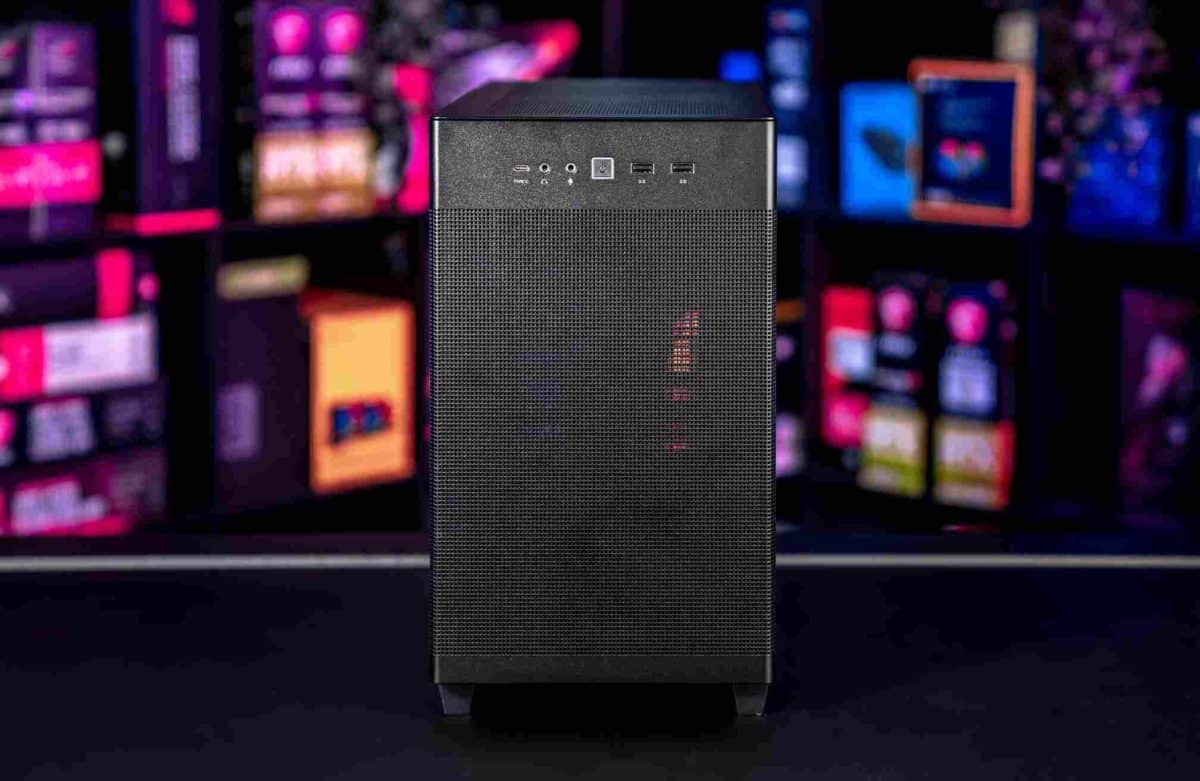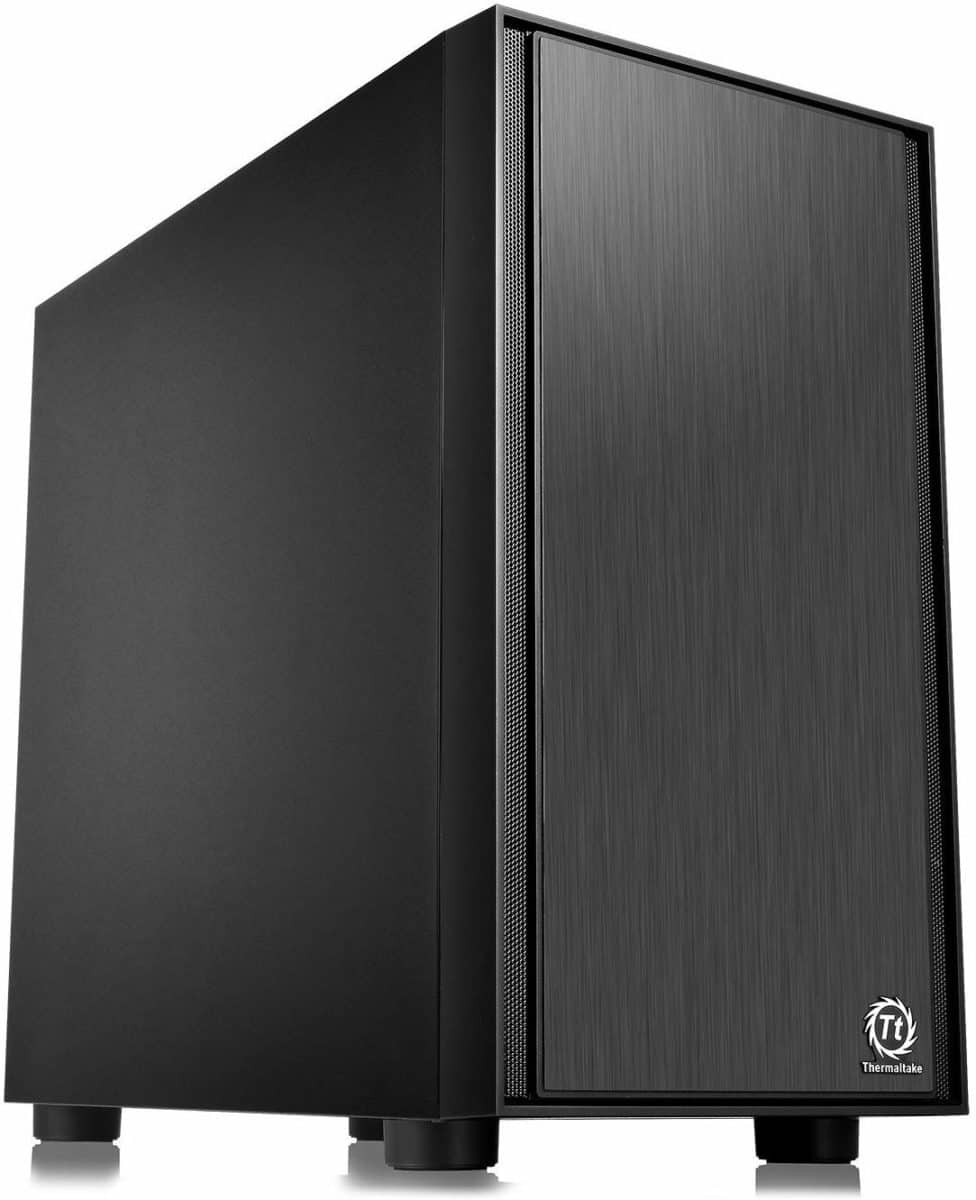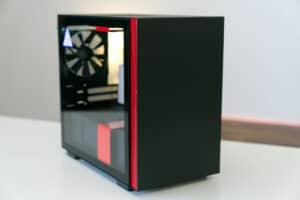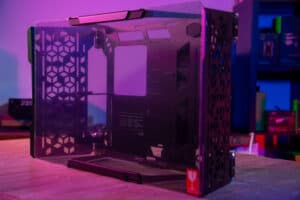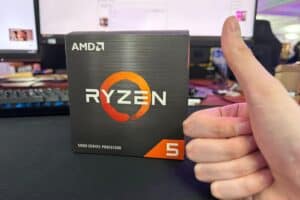Best Micro ATX (MATX) cases in 2024 – our 5 top cases from budget to best
Five cases that show size, as well as style, is important
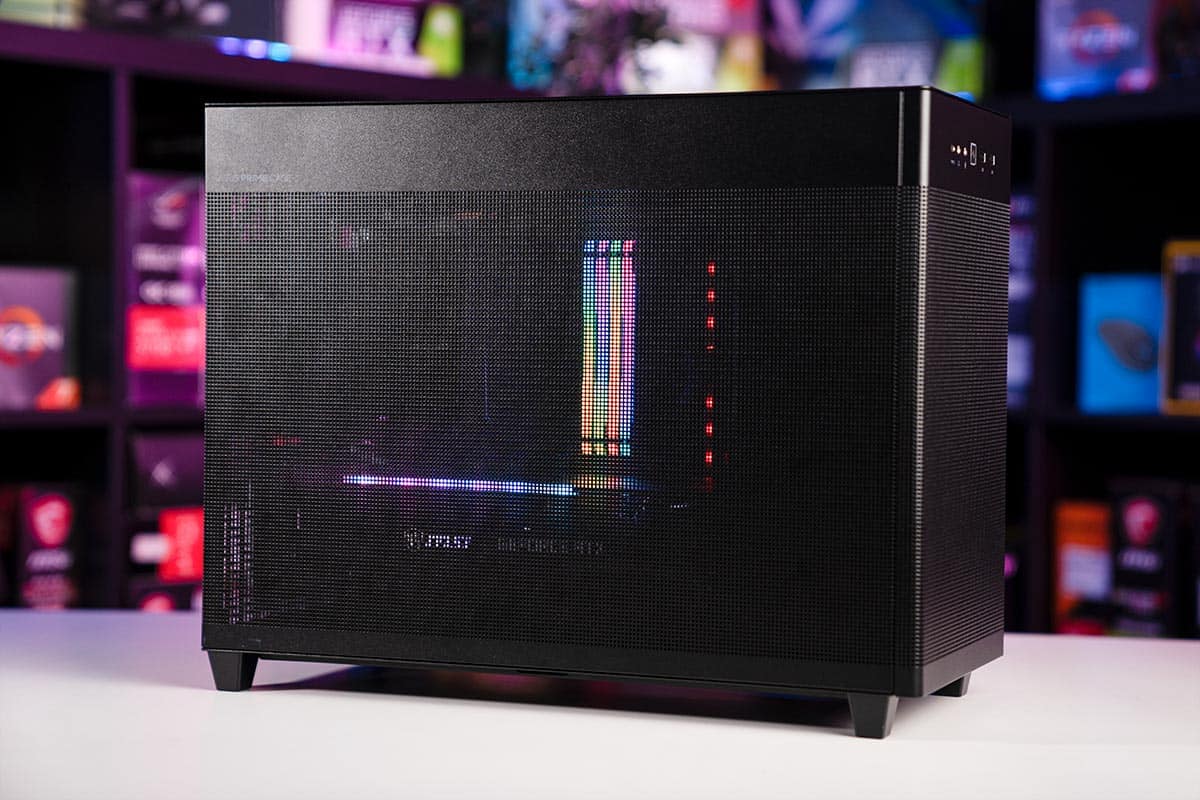
WePC is reader-supported. When you buy through links on our site, we may earn an affiliate commission. Prices subject to change. Learn more
After the best Micro ATX case? Then you’ve come to the right place to find the top choices. A MATX case is a lot smaller than your standard and takes up much less space. Requiring some more thought about compatibility and consideration, we find the best MATX cases around.
If a standard PC case isn’t up to your standards then these smaller options might be the way forward. They’re a bit tougher to find them as they aren’t as popular but we’ll be updating this page to keep the latest ones that are worthy of your consideration. There are plenty of worthy considerations for when you’re building your next gaming PC. If you want it quick and simple our top selections are the ASUS Prime AP201, Thermaltake Versa H17, and Cooler Master Q300L. We’ll also be updating this page with the latest and best picks so you can find the right choice for you.
Today’s best PC case deals
- NZXT H9 Flow Dual-Chamber ATX Mid-Tower PC Gaming Case – Save 21% NOW!
- Corsair 3000D RGB Airflow – Save 30%
- MSI MAG Forge 112R – Save 22%
- Corsair 5000D Airflow – Save 29%
- CORSAIR 3500X ARGB Mid-Tower – Save 18%
- be quiet! Light Base 600 LX – Save 20%
- Lian Li V3000 Plus White GGF Edition Full Tower case – Save 55% NOW!
- be quiet! Dark Base PRO 901 Black computer case – Save 12% NOW!
- Corsair 5000D – Save 17% NOW!
- Thermaltake Core P3 Pro E-ATX Tempered Glass Mid Tower – Save 27% NOW!
Best micro ATX case
ASUS Prime AP201
ASUS Prime AP201
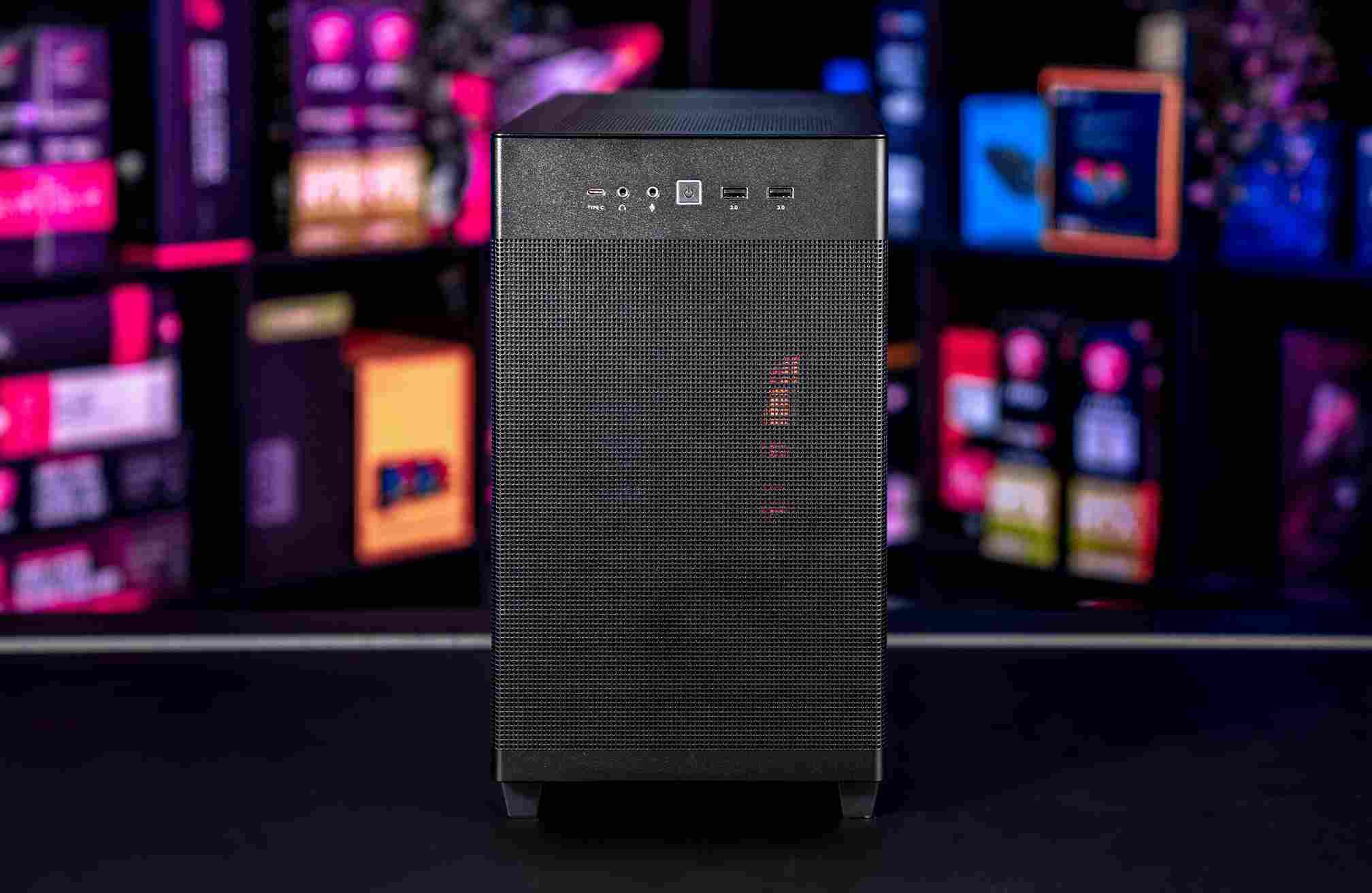
Type
Small tower
Motherboard Support
Micro-ATX, Mini-ITX
Dimensions
460 x 205 x 350 mm (LxWxH)
Included Fans
1x Prime 120mm
- Mesh design focuses on airflow
- Spacious inside offers easy building and good compatibility
- Front mounted PSU gives it good cooling possibility and unique design
- Lots of cooling expansion for such small case, even able to fit 360mm rad on top
- Well built and sturdy with high quality materials
- Only one included fan limits the amount of actual cooling provided so requires additional purchases
- Limited back space only one hidden channel
As we reviewed the ASUS AP201, we found it to be a great compact choice to utilize as a small form factor build. It comes with some options to choose from when deciding on which version to buy. With a black and white choice both with mesh sides or glass if you prefer to see more clearly what is inside your build.
But that cuts back on its airflow and cooling capacity. Although it supports the use of two to three top fans up to (120/140mm) or even a radiator up to 360 mm in length it only comes with one fan preinstalled. You may want to add to this to ensure your components don’t get too toasty. But the mesh does allow it to come naturally to them like the GPU supply from the bottom as long as keep it open.
However, we did find that the back of the case does limit your ease of building and how much you can cram in there. Cable management is key to making sure you can fit everything in properly and still be able to close up the panels and prevent cables from interfering with airflow.
For its expansion, you can find one 2.5″ bay along with three 2.5″/3.5″ combo bays. You’ll have four expansion slots, then at the front I/O you will have access to one headphone and microphone jack, two USB 3.2 Gen 2, and one USB 3.2 Gen2 Type C. Sizes of your components are limited to 170mm for the CPU cooler height, 338mm for max GPU length, and a max PSU length between 140-180mm.
Thermaltake Versa H17
Thermaltake Versa H17

Type
Micro Tower
Motherboard Support
Micro-ATX, Mini-ITX
Dimensions (HxWxD)
440 x 206 x 396 mm
Included Fans
1 x 120mm fan
- Basic, yet appealing case design
- Very good value for money
- AIO cooling compatible
- Easy to cable manage
- Airflow a little limited
- Only one included fan
We’ve recently had the pleasure of reviewing a couple of Thermaltake’s case offerings (Thermaltake Core V1 and Thermaltake View 71) with some impressive results. So, when choosing our budget pick for the m-ATX category, the Thermaltake Versa H17 was an instant contender. This case keeps the Versa styling (boxy) that we’ve seen on other Versa models before, however, it does offer a sleek, brushed aluminum style front panel that is aesthetically pleasing. That being said, there are an additional two versions of the H17 that offer a tempered glass side panel and an acrylic side panel.
As far as features are concerned, the H17 comes with one pre-installed exhaust fan (120mm) which makes use of a 3-pin cable over a Molex. Users then have the option to install additional fans in the front and roof if they need additional airflow. It even supports a 280mm radiator on the front.
From a build point of view, the assembly process using this case was extremely easy. The cable cut-outs were well-positioned (although not grommeted) and the PSU shroud helped aid in cable management as well. The rear of the case is another side of solid metal, so cable management at the back won’t be an issue.
The H17 has support for 2 x 2.5″ drives alongside 2 x 3.5 drives which can be mounted to the motherboard tray. The clearance inside supports a PSU of up to 220mm, a GPU of 350mm, and a CPU cooler of 155mm in height. So all-in-all, a decent amount of room. While the airflow isn’t the greatest I’ve ever seen, it’s still efficient enough at keeping your components cool. Overall, another excellent case from Thermaltake that offers great value for money.
Cooler Master MasterBox Q300L
Cooler Master MasterBox Q300L mATX Case

Type
Micro Tower
Motherboard Support
Micro-ATX, Mini-ITX
Dimensions (HxWxD)
378 x 230 x 387mm
Included Fans
1 x 120mm fan
- Visually pleasing design
- Brilliant value
- Comes with a set of dust filters (magnetic)
- Can fit ATX PSU
- Flimsy metal around disposable PCI slots
- One included fan
Another excellent mATX case comes in the form of the Cooler Master MasterBox Q300L. It provides a great value choice without having to cut back on any quality and comfort features. Although smaller in size it does keep component support strong and gives you some flexibility to the function and design of it.
One of the unique features is the modular I/O panel on the Q300L. You can move it to the top, bottom, or front on each side of the case, allowing you to fit it perfectly wherever your setup needs it to be and for ease of your use. It also utilizes dust filters on the top and front that are simply magnetically stuck on, with a patterned look of both giving a nice look and a useful solution. The case can also be stood up or placed on its side with rubber feet on the screws so you can shake it up however you need it.
The panel provides an edge-to-edge look too, for an insight into what’s built inside so you can show off the look of it and you can appreciate any RGB and nice cable management you include. The back panel also offers up 28mm of space, which does require some squishing but certainly provides you with a lot of potential when routing your cables and getting the panel shut.
As for what you can fit into the Q300L there is a lot of expansion you can take advantage of. The case features four expansion slots for fitting in your PCIe cards, one 3.5-inch bay for hard drives, and 2.5-inch bays for your SSDs. The movable I/O panel includes two USB 3.0 connectors, and an audio in and out along with power and reset. For cooling, you get one fan in the back, along with support for two 120/140mm in front, two 120mms up top, and just the one 120 at the back. Capable of fitting radiators, you can get 120 and 240mm in front, and 120mm at back. Clearance gives you 159mm for your CPU cooler, and 360mm for your GPU, and the PSU can be a full ATX bottom mount option.
Things to know about micro ATX cases
The following factors are important and should be taken into consideration before buying your next micro ATX case. That’s why we’ll go over these things in some more detail.
There are a few things to consider before just clicking “buy” on a case you love. Firstly, be aware of the size of your components (form factor). Motherboards, GPUs, and PSUs form factor can vary in size, so it’s important to check the case can support your parts. Also, before jumping into a case purchase, it’s always worth considering what fan configuration you’re going to use and how many hard drives you plan on installing.
Motherboard Form Factor
You are going to need to know your motherboard’s form factor before you begin. The most common motherboard sizes are ATX, Micro-ATX, and Mini-ITX, with ATX being the biggest of the three – and Mini-ATX being the smallest.
Smaller boards will have less room for your components and will generally have fewer features too. This isn’t bad if you don’t need a lot of space. However, if you’re making a high-end gaming build (or upgrading a mid-range build), then you might want to stick with the classic ATX board and therefore visit some different case options.
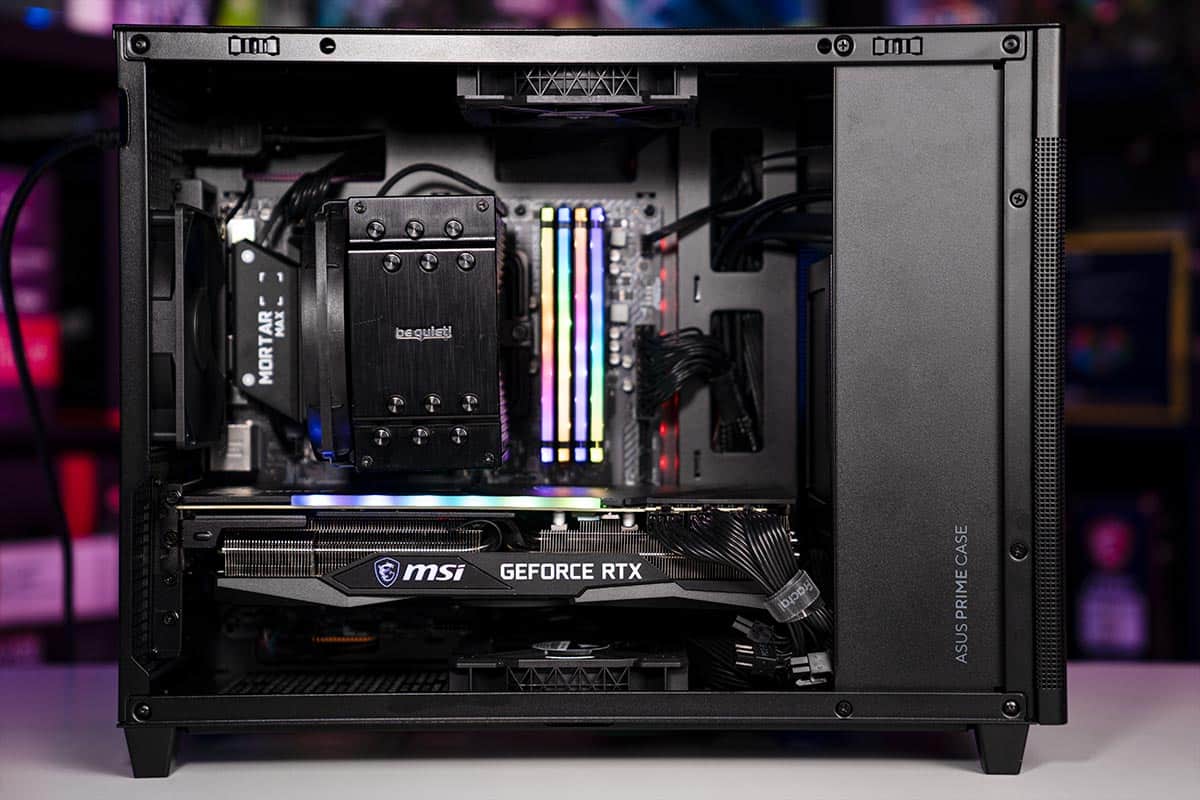
Case form factors
You will normally find the motherboard compatibility labeled in the name of the case or very easily in the specs. This outlines the maximum-sized motherboard you can fit into the case.
There are three prominent types of computer cases (although there are more) and each is compatible with different types of motherboards:
- Full-tower cases are the largest cases and can work with ATX, Micro-ATX, and Mini-ITX. Their large size is designed for extra components rather than exceptionally larger motherboards.
- Mid-tower cases are the most popular and can also work with motherboards that are as large as ATX.
- Mini-tower cases sacrifice the larger ATX boards, but can still use Micro-ATX and Mini-ITX boards.
It is worth noting that your micro-ATX build will look great in any sized case from the smaller ‘node’ style boxes to a mid-tower case. Most of the time, cases will cater to motherboards with smaller sizes, having said that, some cases don’t take that into consideration – leading to issues with routing I/O connectors from the front panel.
Things to consider
When purchasing a case with a smaller form factor, there are certain things you will need to consider before choosing the components you decide to fill it with.
Below are some of the most important considerations when it comes to a micro-ATX case
Component compatibility
One of the first things you must consider before purchasing a small PC case is your components. The chances are, if you are looking for the best micro-ATX case then you are set on building a smaller-sized PC. Great! However, if you’re thinking of downsizing your ATX build (by switching motherboards) you might be at risk of component incompatibility.
Many small form factor cases don’t have the capacity to house a large GPU. Although, some will. The same can be said for the PSU, CPU Cooler, and AIO Cooler. You must ensure that the case you’re looking at can support the hardware you plan on installing in it. Otherwise, you’ll be left with a somewhat expensive paperweight.
Cable management
Whether you’re looking at a full tower PC case or a mATX case, cable management is highly important when it comes to building assembly and aesthetics. Unfortunately, though, it often gets forgotten about when you get into building a micro-ATX system.
This neglect comes from smaller systems tending to be of lower quality, offering fewer options when it comes to this department- but that isn’t always the case. Cable management in micro-ATX cases is more important than ever due to the decreased airflow they provide. More often than not, they offer less fan mounting solutions to properly cool the inside over ATX cases. So keep those cables routed properly around the system to maximize cooling performance.

Some advantages to the Micro ATX form factor
There are several advantages to using a micro ATX case form factor. Here they are in no particular order:
- Cost: Micro ATX cases tend to be less expensive than full ATX cases, making them a more budget-friendly option for budget-conscious consumers.
- Size: Micro ATX cases are smaller than full ATX cases, making them a more compact option for users who want to save space or who don’t need a large case for their system.
- Compatibility: Micro ATX motherboards are compatible with most components and peripherals, including graphics cards, hard drives, and memory.
- Upgradeability: Micro ATX cases often have fewer expansion slots than full ATX cases, but they still provide enough slots to upgrade the system over time.
- Ease of Assembly: Micro ATX cases are easier to build in than full ATX cases because they are smaller and have fewer components, which can make the assembly process quicker and less complex.
- Improved cooling: Due to their compact size, micro ATX cases can often offer improved cooling over larger cases as there is less space for hot air to circulate.
Final word
So, there you have it, our comprehensive breakdown of the best micro-ATX cases currently available. The importance of a PC case cannot be overstated. Your case protects the rest of your components and provides them with airflow to ensure they’re running at a stable temperature. The additional bonuses that come with a micro-ATX case, however, mean you can add convenience and some real space-saving solutions into the mix as well!
FAQs
Do ATX Cases Support Micro ATX?
We’ve got some good news for all you budding minimalists out there. Yes, a Micro ATX board will be supported in a full-size ATX case.
Backward compatibility was a huge focus point in the development phase of Micro ATX boards. They’re made with a subset of the exact same mounting points found on a typical ATX motherboard, and the I/O interface is identical to the ATX format, ensuring no ports are blocked or hard to reach when situated in a full ATX case.
In addition, the majority of Micro ATX motherboards are fitted with the same power connectors as their larger siblings, meaning you can use your full-sized power supplies for your minuscule mobo.
So, save yourself some money, buy your Micro ATX board first, then when you can, treat yourself to a case that matches the Micro ATX form factor.
What Is the Smallest Micro ATX Case?
All Micro ATX cases are small, but there are some that are pushing the boundaries of what’s considered discrete. Three in particular come to mind.
The NZXT H210 on our list measures only 349mm (H) x 210mm (W) x 372mm (D). Among tiny cases, this is an even tinier case and the perfect choice for those who like to keep their Micro ATX build as infinitesimal as possible.
Measuring just 94mm (H) x 319 (W) x 439mm (D), the Antec Minuet 350 is so diminutive, it borders on cute. This oblong design might be the case you’ve been dreaming of to complete that minimalist PC aesthetic.
The last miniature masterpiece is the InWin 301. Measuring just 370.84mm (H) x 187.96mm (W) x 363.22mm (D), it still somehow has a 330mm GPU clearance space.
Are All Micro ATX Motherboards the Same Size?
Unlike PC cases that have no universal standards whatsoever, motherboard form factors are more definite, but that’s not to say companies don’t find a little of wiggle room to experiment.
The consensus is that no motherboard beyond the 9.6” x 9.6” should be considered a Micro ATX motherboard, but how a manufacturer distributes this 19.2” capacity may differ.
Some will be thinner and longer, resembling a shrunken down version of a standard ATX board. Other Micro ATX boards may not even use up all the allotted inches, amounting to an even micro-er design. Even though they’re slightly smaller, they’re still fundamentally a Micro ATX motherboard, if only because they’re not enough like any other board type.
Can ITX Fit in ATX Case?
Measuring only 6.7” x 6.7”, there’s no doubt you can fit a Mini ITX motherboard in an ATX case. Hell, you could fit tons of them in there. The question is, do ATX cases support Mini ITX motherboards?
The answer is yet again, yes! Just as the Micro ATX was developed to be backward compatible with existing form factors, so was the Mini ITX. Featuring the same four mounting holes and backplate as a standard ATX motherboard, you can hook one up in your full-size ATX case without making any modifications whatsoever.
Although Mini ITX boards only have a single expansion slot, it lines up exactly with the standard ATX board layout, ensuring functional compatibility with larger cases.
As Micro ATX and MINI ITX share the same mounting hardware, you can even load a Micro ATX case with a Mini ITX motherboard. In fact, some cases are specifically marketed as being able to accommodate either of the small form factors.
Can ATX PSU Fit in MATX Case?
Generally speaking, a MATX case will have enough room to accommodate an ATX PSU. The form factor is only restrictive when it comes to motherboard size (and in some cases GPU size).
It might be a little tight in the smaller Micro ATX cases, so it makes sense to take some accurate measurements of both the case and the PSU before dedicating to a purchase.
The reason that most Micro ATX cases have room to spare for ATX PSUs is that there really isn’t any such thing as a Micro ATX PSU. Dedicated power supplies were never developed. Your only options are an ATX PSU or an SFX PSU, but the latter is used exclusively for Mini ITX builds.
What Is ITX vs ATX?
The first difference you’ll notice between Mini ITX and ATX/MATX motherboards is the form factor. Mini ITX dimensions are as follows: 6.7” x 6.7”. Most Micro ATX boards measure 9.6” x 9.6”, and standard ATX motherboards measure 11.9” x 9.6”. Though companies play it pretty fast and loose with Micro ATX dimensions and shaping, Mini ITX boards are only ever one size and shape.
As they’re so small, Mini ITX motherboards don’t have anywhere near the number of facilities ATX boards do. For example, standard ATX boards can have as many as seven expansion slots, with Micro ATX boards holding up to four. Mini ITX boards only ever have a single expansion slot, and max out at two sticks of RAM with a 32GB cap.
Mini ITX motherboards are preferred by many for their power efficiency, portability, and low running volume. They can be used for PC gaming, but large, high-end graphics cards can rarely fit in a Mini ITX case, so if you’re looking to build a gaming powerhouse, you’re best off sticking with ATX.
How Do I Know if My Case Is ATX or Micro ATX?
Being that there are no universal case measurements, it can be confusing trying to distinguish what your case is actually designed for; however, there is one sure-fire way to figure this out.
If your board fits a full-sized ATX board in it, then it’s an ATX case. If it only fits in a Micro ATX motherboard, then it’s a Micro ATX case. It’s as simple as that.
If for some reason you’re still unsure what’s what, look the product up online and see what the manufacturer has to say about it.

